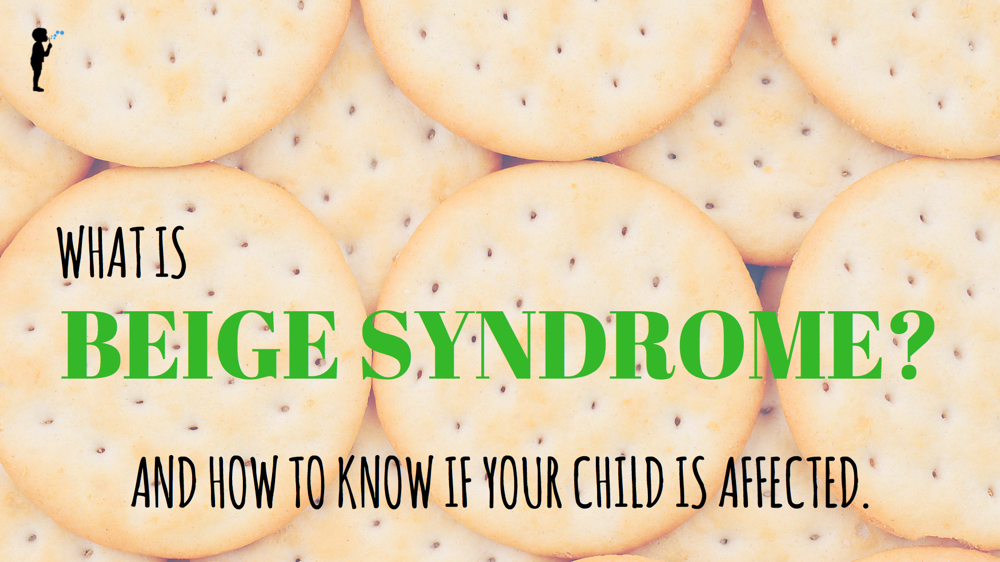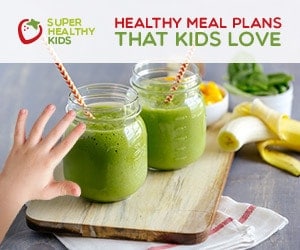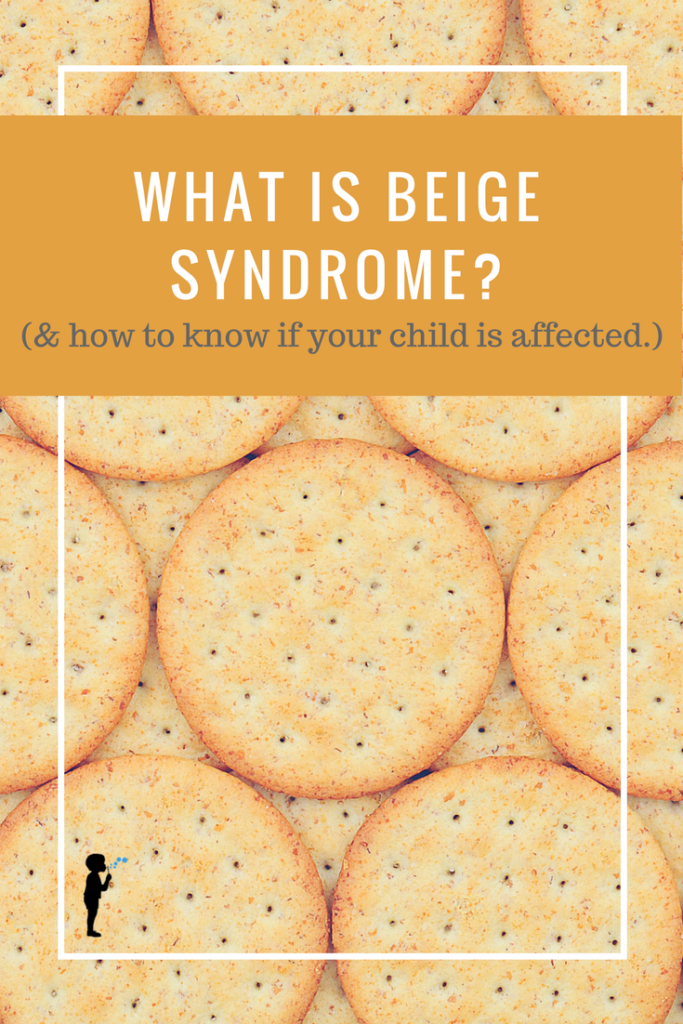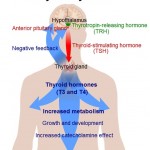
What is Beige Syndrome?

Beige Syndrome
Does your child suffer from the “Beige syndrome?” Toddlers are the population most affected by this common affliction. This disorder can cause vitamin and mineral deficiencies, behavioral problems, and may predispose to frequent colds and ear infections.
How do you know if your child has “Beige Syndrome?” Take a look at their plate: is it all beige? Have they eaten nothing but crackers, crustless bread, cheese, hotdogs and milk all day? If so, then your child is affected!
Sound familiar?
I joke, of course, but Beige Syndrome can be a source of serious frustration for parents. So many toddlers have multiple food “aversions” that their diet becomes limited to cheerios, goldfish crackers and pasta with ketchup on top. It is a desperate plea for most parents to get anything green in their kids at all. So here are some tips!
It starts with YOU.
First, most importantly, parents must be role models. In 90% of cases the extreme picky phase of eating passes once the toddler years are over. Research shows us that parents who eat veggies have kids who eat veggies! You can’t expect your children to be healthy eaters if your own diet is mostly beige.
Have mealtimes without distractions.
Secondly – turn off the TV, eat together, and eat at the same time (roughly) every day. Kids are like timers! Eating together helps reinforce good food habits and lets your children see your own vegetable-eating. Taking time to focus on your meal also puts the digestive system into parasympathetic mode, which is essential for proper digestion and absorption of nutrients.
Grow your own food.
If you can – grow your own food! A vegetable garden is the best way to encourage children to try new foods. My mentor once said “Kids need to know where their food comes from. (But not the meat. Don’t show them how Mr. Cow turns into Mr. Steak.)”
Eat a rainbow a day.
Make vegetable eating fun. I love to encourage kids to eat a rainbow every day. Make a chart for the refrigerator (or buy one here!) that has 5 colors of the rainbow (blue and purple are counted together). Kids are responsible for eating one fruit or vegetable for each of the 5 colors of the rainbow. They can mark their progress with stickers or magnets.
You can make veggies, whole grains, nuts, beans and fruits more fun by using a little food psychology: make shapes, smiles or pictures with the food. Make their plate attractive – it only takes a few seconds to arrange veggies into a smile. Make a broccoli “forest,” “ants on a log” (raisins and nut butter on celery), cherry tomato “hearts”, green bean “grass,” or a cauliflower “bunny.” You don’t have to be a Bento box master to use a cookie cutter from time to time.
It’s okay to not like your veggies, but it’s not okay to not try them.
If your toddler or older child refuses a food once – try again! You may want to adopt the “No thank you bite” rule: instead of declaring a food is “yucky” the child must try the item at least once before saying “No thank you.” (Some parents require three bites: one to try, one to be sure, and one to say “No thank you.”) In my office I often tell the child directly: “Dr. K says it’s OKAY to not like your veggies!” (The child often looks at me with big eyes.) “But Dr. K says it’s not okay to not TRY your veggies.” Research shows that children need to be exposed to vegetables frequently and consistently to learn to like them.
Cook with variety, and find creative ways to introduce vegetables into different foods – this encourages your kids to always try something new.
Try the Fridge Shelf Method.
If your child manipulates you into cooking three different dinners every night, you may want to try the Fridge Shelf method. Dedicate one shelf of your fridge to be for your child. Fill the shelf with various healthy foods. They can refuse to eat their dinner, but you will not cook them another – instead they can eat whatever is on their fridge shelf. (You can put their dinner on the fridge shelf and see if they will eat it later!)
Food is for nourishment, not for rewards.
Above all, remember that food is for nourishment. Though it is very tempting, try to never make food a reward. As a physician, I do believe that much of our disordered eating habits in this country are due to our use of food (sweets and treats) as a prize. There is nothing wrong with an occasional bowl of ice-cream – but make it a special treat, not a reward for a certain behavior. The best rewards are special outings with Mom or Dad that the child chooses. (And if the day ends with a popsicle, that’s okay too! Just make it a healthy one.)
Need more healthy eating tips?
Check out Super Healthy Kids. Shopping at the Super Healthy Kids site helps support Naturopathic Pediatrics and the staff who mostly volunteer their time to keep this site running. We love when we find a sister company that promotes healthy eating and whole foods.




Jessica
March 12, 2013 at 8:22 amThese are great tips, thanks for sharing! Check out 12 other ways to fix picky eaters here: http://www.care.com/child-care-12-tricks-to-fix-a-picky-eater-p1017-q20351192.html
Christina
February 5, 2013 at 5:14 pmThis was really helpful information! I was getting a bit discouraged about my toddler not eating like he use to eat. I will definitely keep trying foods periodically. I think the Fridge Shelf method could really help our family out. I sometimes feel burnt out wondering if I should make him another meal after he refuses the first just so he will eat. This may be our solution!
Thank your for your insight Dr. Krumbeck
kate
January 29, 2013 at 4:59 pmThis is really helpful information! I like the rainbow idea. I have a lot of trouble getting my 3 year old to eat greens. All i have managed lately is spinach salad with lots of dressing on top, and i don’t feel great about that. do you think it’s worthwhile to coat greens with something like ranch dressing to get a kid to eat it?
Dr. Erika Krumbeck
January 29, 2013 at 7:47 pmYeah it is tricky! I’m not a big fan of ranch because of the artificial flavorings and junk in it (but organic ranch might be okay?) That said, sometimes you have to do what you have to do. Try the smiley faces, “trees”, dinosaurs, and other tricks that I recommend. If ranch is still the only way to do it, then do it. The biggest thing is to just keep trying different things. Never assume that because they didn’t eat it before that they will never eat it. Always put some ranch-less veggies on their plates just to try. You may find that they will tolerate some veggies but not others. Some kids are actually super sensitive to the bitter-component of many vegetables – it is actually a scientifically proven principle. Those kids may be more challenging to get vegetables into, but still some kids may find ones that they like (green beans, peas and carrots seem to be the most popular).
Patti Mullen
January 29, 2013 at 2:44 pmVery helpful for my semi-picky eater. My 3 yo can be challenging to get to try new things! Thanks Dr. Erika!